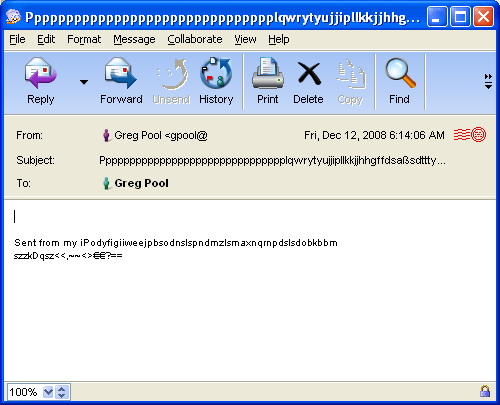How Artificial Intelligence Can Save Email

E-mail, on the one hand, remains a popular means of communication, on the other - it is when working with email that the issue of information overload is very acute. People receive dozens and hundreds of letters, correspondence archives consist of thousands of conversations. Often there is no power to sort out all this diversity, and a significant part of incoming correspondence is garbage that no one wants to receive and which will never be answered.
This leads to the fact that some users - especially young people - use e-mail less and less. It seems that the future of email is at risk due to the development of chat bots and instant messengers, but perhaps this technology still has a chance to solve its problems. And artificial intelligence (AI) can help.
How AI makes letters better
One of the problems underlying information overload is the low quality of the content of some emails written by people. According to statistics , on average, an office employee receives up to 121 letters per day - if it is difficult for a person to immediately understand a message, the likelihood that it will be delayed and then buried under new correspondence increases.
Artificial intelligence is helping to solve this problem right now. For example, developers of the Boomerang servicecreated the Respondable AI extension, which analyzes the text of email messages and offers ways to improve it. The robot will say if the topic is too short and incomprehensible, it will warn that the text looks rude. As a result, the recipient will receive clear letters with which it is clear what to do, and the sender is more likely to receive an early reply.

Artificial intelligence analyzes the letter and tells the sender what its disadvantages are and how likely it is to get an answer.
In addition, robots can give personalized advice on how to communicate by email with a specific person. For example, Crystal service collects public data about people with whom a person communicates by mail, and generates recommendations on how to write letters to them.
The robot knows what you want to read.
The numbers indicate that people most often unsubscribe from mailing lists due to the fact that their mailboxes are clogged with irrelevant marketing information. And here, artificial intelligence can be a tool to solve the problem.
Already, email marketing systems with the introduction of AI technologies are able to break website visitors into groups according to the keywords that led them to the page, or even based on the activity of a particular subscriber. As a result, it is possible not only to create letters “tailored” for the interests of a particular user, but also to understand what kind of message you need to send him - a warming interest or something to try to wake a person who has subscribed to the newsletter but does not read it at all.
For example, purchased Zeta Global serviceBoomtrain analyzes the behavior of users on the site, and then uses this information when composing messages, and Conversica virtual assistant sends an email to a potential buyer a couple of minutes after he leaves his email - and about 50% of the interlocutors respond to such robotic letters, because they written as if on behalf of a person, people like it more than faceless auto answers.
But that's not all - AI systems, like the one built into the SendPulse email newsletter service , are able to collect information about the behavior of email newsletter subscribers in the past: on what days and when did they open emails, in which cases clicked on links . All this significantly increases the percentage of open letters - on average by 60%.

In addition, such an analysis allows you to automatically change offers in pop-ups and subscription widgets depending on the user's preferences (for example, based on search queries) - as a result, users are shown information that is interesting to them, and they receive newsletters that they actually read.
Conclusion
Despite the fact that there are still email problems that no artificial intelligence can solve yet - for example, difficulties with correctly displaying emails on any mobile device - it is obvious that AI may become a key factor in maintaining the popularity of email in the future.
The introduction of AI-technology solves the problems of both business and end users - people receive letters that are useful and understandable to them personally, and companies note an increase in business performance. And if so, then there are no reasons why email cannot remain the number one means of communication.
